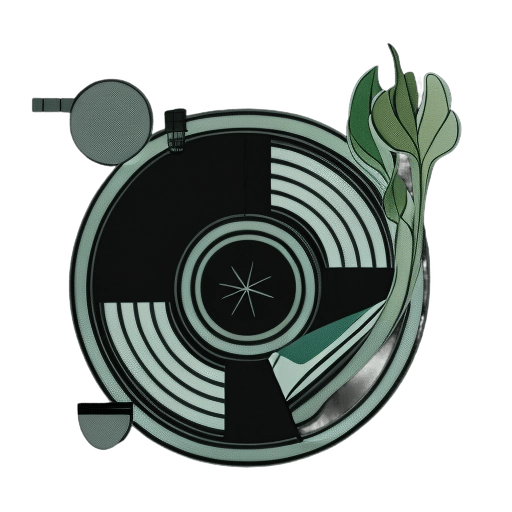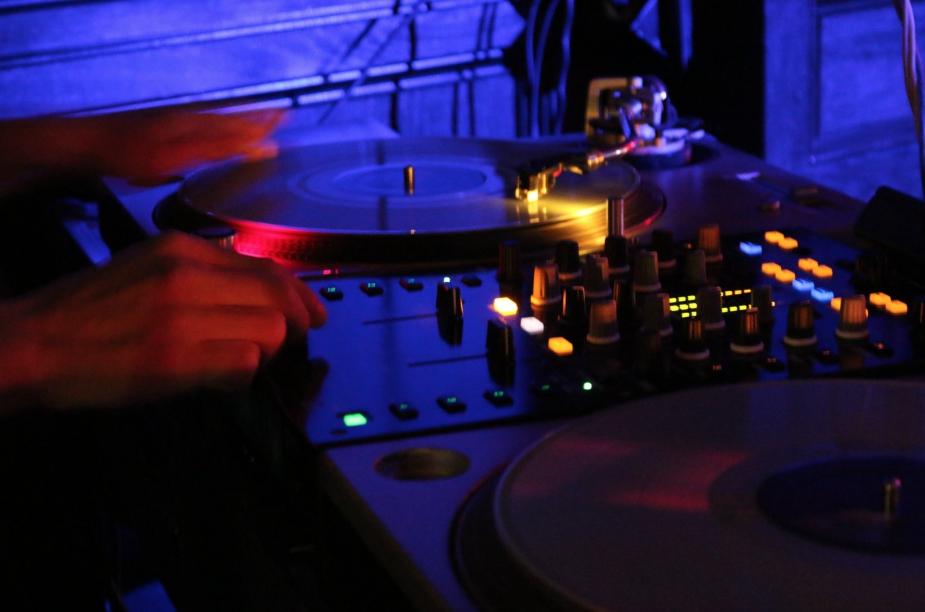Whether you’re just starting out or already spinning records, having a quality home DJ setup is essential for practice, creativity, and producing professional sounds. But between choosing equipment, optimizing your workspace, and dialing in the audio, the process can feel overwhelming for beginners.
This comprehensive guide will walk you through everything you need to know about creating your own home DJ setup. Follow our tips to choose the perfect gear for your needs, set up an ergonomic and acoustically balanced workspace, and take your mixes to the next level.
Choosing the Right Equipment for Your Home DJ Setup
The cornerstone of a stellar home DJ setup hinges on procuring the right home DJ equipment. While initiating your journey with just a laptop and a basic DJ controller is feasible, the progression of your DJing passion will inevitably lead you to seek out top-tier gear that resonates with your style. As you delve deeper, the quintessential image of a DJ setup, adorned with sophisticated equalizing dials, turntable intricacies, and an ensemble of buttons, comes into sharp focus.
Laptop
When diving into the world of DJing, the heart of your home DJ setup often revolves around your computing device, whether that’s a desktop, a laptop, or even a tablet. When DJing with a laptop, especially, portability becomes a significant advantage, allowing you to easily transition between gigs or studios.
Hence, for most DJs today, a laptop is a way to go due to:
- Portability: Easily bring your music library, software, and performances anywhere.
- Space saving: Take up less room than bulky desktop setups.
- Cost: More affordable than building a high-end desktop.
Quality matters. It’s essential to invest in a device robust enough to handle the demands of various DJ software. Speaking technically, keeping an eye on your device’s RAM (random-access memory) and its processor is crucial.
For most mainstream DJ software, an Intel Core i5 processor paired with 4GB of RAM usually suffices. However, if your aspirations extend to crafting your own music and beats, leaning towards 8GB of RAM might be a wise decision. Naturally, as RAM increases, so does the price tag of the device. Therefore, always ensure you’re familiar with the specifications required by your chosen software before investing in any equipment.

DJ Controllers
The moment the term ‘DJ’ echoes in your ears, an intricate image of a controller emerges, replete with its sophisticated equalizing dials, joystick operations, turntables, and an array of buttons.
Central to any home DJ setup, the controller dominates as the prime equipment where you’ll invest most of your attention. At its core, it offers a comprehensive solution, encapsulating dual turntables and a mixer, ready to integrate seamlessly with the DJ software on your laptop.
Navigating the vast landscape of DJ equipment unveils a plethora of choices. There’s the timeless allure of the turntable design, the functional elegance of the CD style, or the cutting-edge innovation of a stand-alone controller.
For those embarking on their DJing journey, especially when mindful of budget constraints, it might be worth considering DJ controllers under $500. A stand-alone controller, in particular, emerges as a favored pick. Its compact nature, coupled with affordability, makes it stand out. Beyond its size and cost, it’s a treasure trove of features — from jog wheels and sliders to performance pads, mic inputs, FX functionalities, and a range of user-friendly controls.
For those on the hunt for a top-notch controller, consider exploring these reputed brands:
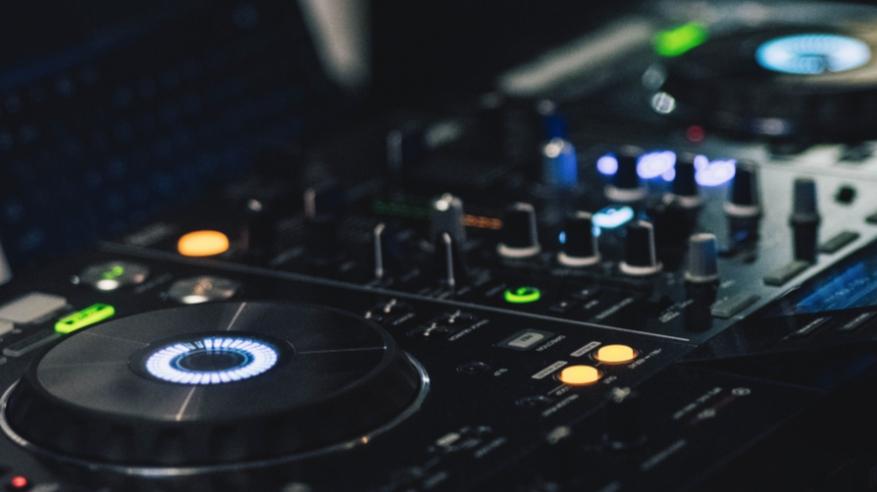
Mixers
In the intricate realm of DJ setups, a mixer emerges as a pivotal hardware element. Its independent nature means it’s not perpetually tethered to your laptop, nor is it bound by the constraints of DJ software. Think of the mixer as a quintessential augmentation – a tool that seamlessly fulfills its primary function of blending various audio elements harmoniously.
While modern controllers might incorporate mixing functionalities, nothing truly parallels the refined precision of standalone DJ mixers. They are tailored to offer:
- Tactile controls, characterized by dials dedicated to EQ settings, sound effects, the all-important crossfader, and intricate filters.
- An array of input channels to accommodate diverse audio sources.
- A caliber of sound clarity and richness that often eclipses standard controllers.
When on the hunt to enrich your DJ setup, seek mixers that not only promise impeccable performance but also resonate with your unique DJing flair, ensuring an intuitive and personalized mixing experience.
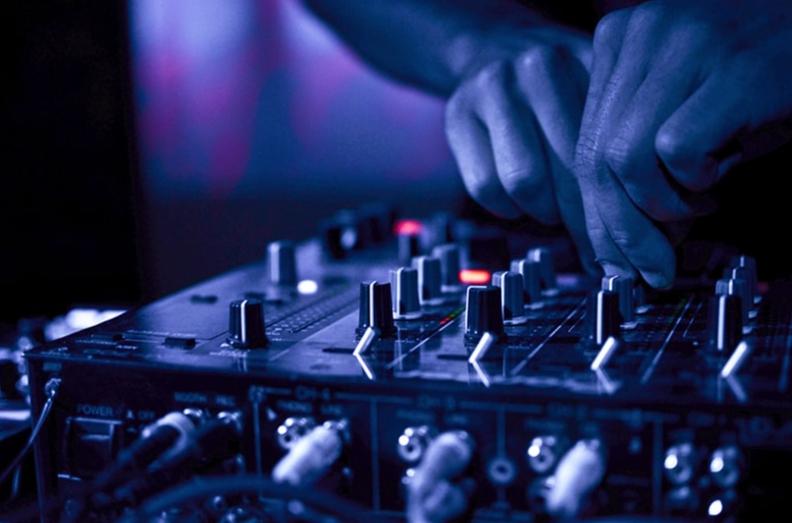
Headphones
Central to your home DJ setup is an uncompromising emphasis on sound quality. The tracks you’re playing must be crystal clear, ensuring that when you’re introducing a new song into the mix, its beats align flawlessly. In tandem with superior sound fidelity, features like noise cancellation or a closed-back design become paramount. These traits not only enhance your auditory experience but also shield your music from external disruptions, especially if your DJing space happens to be in a bustling section of your home or an ambiently loud venue.
As you craft your home DJ setup, it’s also wise to prioritize comfort, invest in equipment that boasts durability, ensure you have ample cable length for unrestricted movement, and, of course, never compromise on aesthetics. Also, quality headphones are critical for cueing tracks and mixing. Studio headphones provide pure, balanced sound, while DJ headphones emphasize bass:
- Studio: Better for production and identifying subtle details.
- DJ: Optimized for beat matching and cutting through loud environments.
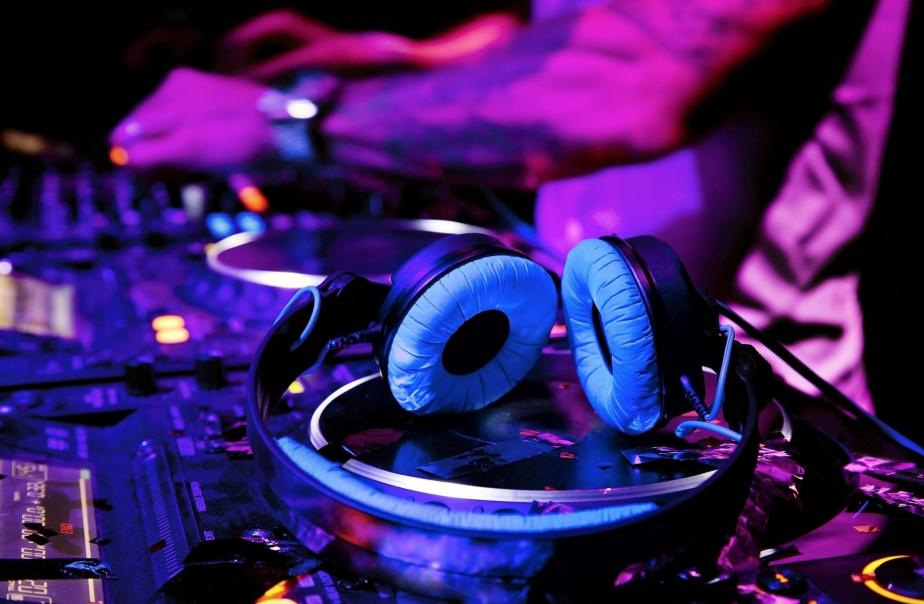
DJ Speakers
In curating the ideal home DJ setup, selecting speakers that complement your home’s space and deliver crisp, high-fidelity audio with negligible distortion is critical. Studio monitors rise as the preferred choice in home DJ environments, delivering sound with impeccable accuracy rather than amplifying or coloring it. When working from home, these monitors ensure that audio reproduction remains true for both mixing and production tasks.
When catering to events, consider PA speakers or powered tops to effectively resonate with larger audiences. Integrating a subwoofer can enhance the experience, producing a profoundly resonant low end.
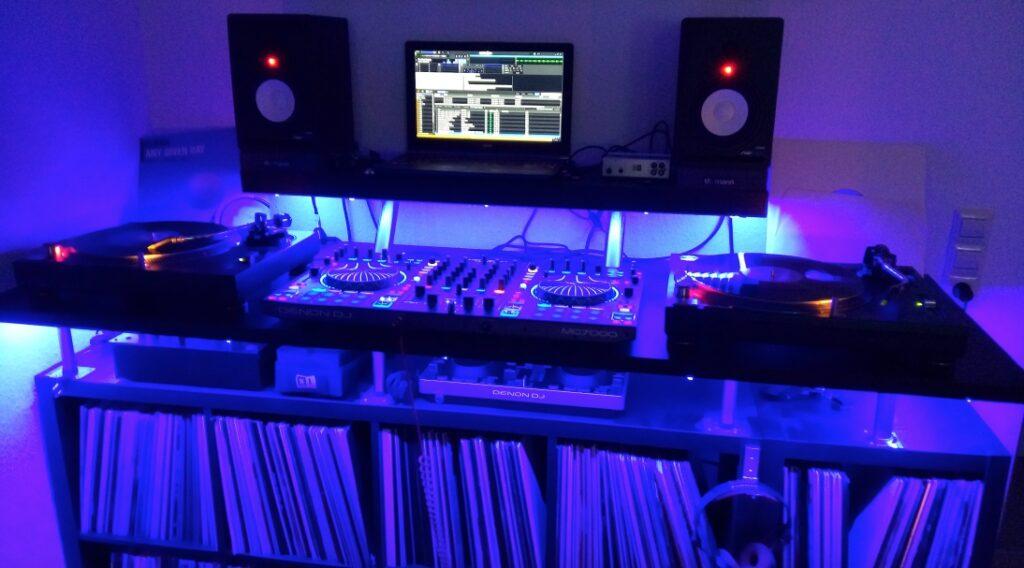
Subwoofers
In refining your party DJ setup, integrating a subwoofer, though not mandatory, can significantly amplify low frequencies and lessen the burden on your primary speakers. It:
- Enriches bass notes, especially in genres like electronic, hip-hop, and dance.
- Alleviates stress on more diminutive monitors, safeguarding against potential damage when cranked up.
- When strategically placed, it intensifies the audio impact without introducing murkiness.
When it comes to home-focused party DJ setups, compact powered subwoofers from brands such as KRK, Mackie, and PreSonus often make the cut. Conversely, expansive venues might benefit from larger subwoofers.

DJ Software
At its core, DJ mixing software programs are designed to seamlessly integrate with a DJ controller. While there are programs capable of operating independently of any extra hardware, the presence of a controller tends to elevate the software experience.
The DJ software mirrors a traditional DJ setup on your digital platform, typically featuring a pair of decks, a central mixer, and an inherent soundcard. Elements such as visual waveforms enable DJs to pinpoint segments like breakdowns and drops in tracks. Meanwhile, key analysis facilitates harmonic mixing, and “beatgrids” provide insights into BPM/tempo and track beat alignment. Additionally, the DJ software environment permits the incorporation of user-defined cue points and loops, which come in handy for on-the-fly remixing and swift mixing.
Prominent DJ software choices encompass:
- Serato DJ: A widely recognized choice brimming with rich features.
- Rekordbox: Tailored to synchronize with Pioneer equipment.
- Traktor Pro: Stellar for those with a penchant for inventive live remixing.
- Virtual DJ: Wallet-friendly and boasts commendable hardware adaptability.
Dabbling with free trials can be instrumental in pinpointing the software that resonates with your DJing essence within your DJ setup.
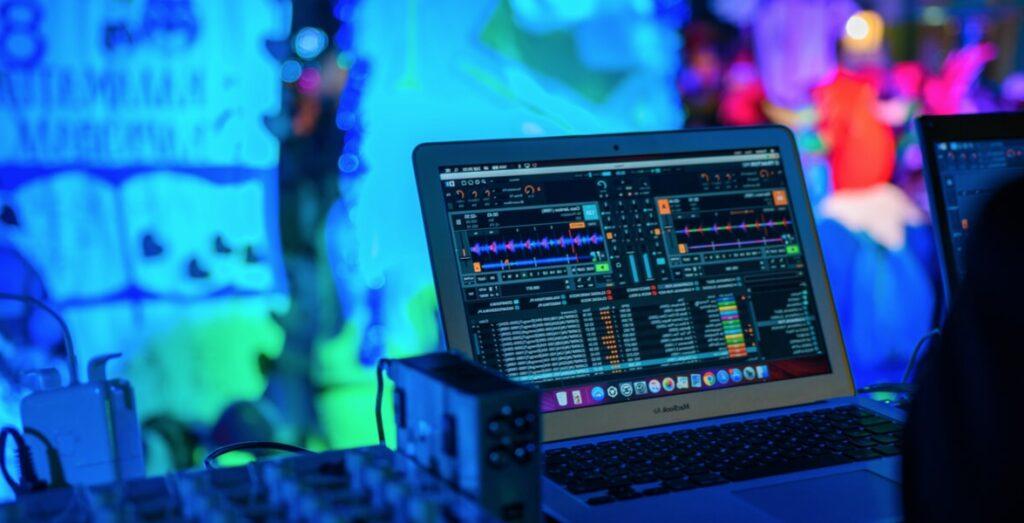
DJ Setup Ideas: Optimizing Your Home DJ Workspace
Beyond the importance of gear selection, the ergonomic arrangement of your home DJ studio room is vital for enduring extended mixing sessions comfortably. Give thought to the room’s layout, the kind of desk that supports your workflow, and appropriate seating, among other factors. These elements, combined, can make or break the experience in your DJ sanctuary.
Room Choice: Soundproofing Tips and Layout Considerations
Crafting the perfect environment for your DJ home studio begins with selecting an appropriate space. It’s ideal to find a room that is distanced from household noise and activities, ensuring minimal disturbance. This space should be capable of containing sounds so housemates remain undisturbed and should be spacious enough to house a desk, speakers, and display screens.
To optimize the room’s acoustics for your home DJ setup, consider integrating features such as acoustic foam panels that minimize sound reflections. Mass-loaded vinyl can be an effective shield against external noise, and an acoustic sealant proves handy in sealing off any potential sound escape routes like gaps or vents.
One critical aspect of setting up your home DJ setup is the orientation of speakers. It’s best to face them away from doors and windows and to introduce acoustic treatments at crucial sound reflection points around your mix area. Sound precision is undeniably a cornerstone of an effective home DJ setup. Thus, adhere to sound engineering guidelines, especially concerning speaker placement, acoustics, and efficient cable management.
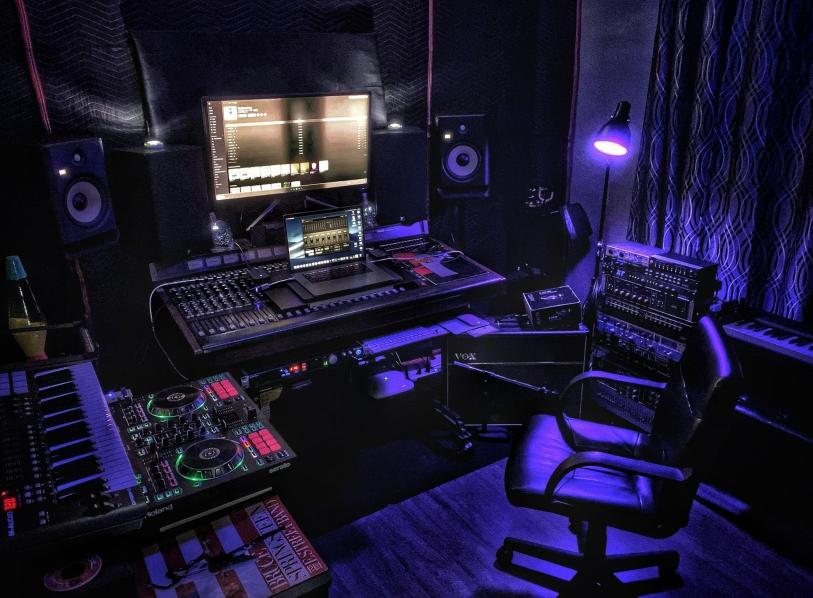
To address specific room acoustics challenges, consider the following tips:
- Positioning broadband absorbers at reflection points and room corners.
- Lining areas opposite to speakers with absorbent panels to curb echo effects.
- Introducing bass traps in corners to mitigate excessive bass.
Lastly, the alignment of your speakers plays a pivotal role. They should match your ear level when seated and be spaced between 6-10 feet apart. To achieve a harmonious sound, ensure they are evenly spaced from your mix area and slightly directed inward. Adjustments to their placement and orientation will ensure a balanced stereo soundscape.
Music Libraries: Stocking Up on Songs to Mix
Having an impressive music collection isn’t just a perk—it’s essential. But how do you go about curating a library that not only spans across genres and decades but also keeps the crowd on their toes with every drop? Let’s consider some strategies to enhance your home DJ setup’s music repertoire.
1. Dive into Record Pools: Partnering with a record pool service can be a game-changer. These platforms frequently offer the latest promos, ensuring your mixes are as fresh as they come.
2. Top the Charts: While the billboard charts will introduce you to current hits, don’t forget about those evergreen classics. Throwback hits can evoke nostalgia and energize any dance floor.
3. Harness the Power of the Web: Music blogs and forums are a treasure trove of information. They often spotlight rising tunes and artists, allowing you to stay ahead of the curve and introduce new tracks to your audience.
4. Dig Deep: Part of what makes DJing an art is the ability to blend the old with the new. Searching for forgotten gems not only widens your music palette but also provides unique samples to incorporate into modern mixes.
5. Quality Matters: Investing in lossless files can make a notable difference in your production quality. Such files ensure that every beat, rhythm, and melody resonates clearly.
6. A Well-Organized DJ Is a Successful DJ: Your music library could be vast, but if it’s not organized, you’ll be lost at sea. Using tagging tools, you can categorize tracks by genre, mood, era, and more. An organized DJ setup means quicker access to the right song at the right moment.
It’s imperative to remember one golden rule: always curate more tracks than you anticipate playing. Having a broad selection at your fingertips not only allows for spontaneous choices based on the crowd’s vibe but also ensures your sets never grow stale. After all, variety is the spice of life, and in the DJing world, it’s the essence of an unforgettable set!

Bonus Tip: Digital vs. Physical Media
Even in an age dominated by digital formats, there’s something enduring about physical media. The tangible aspect of holding a record or CD brings a sense of nostalgia and authenticity. Moreover, many aficionados argue that certain physical formats offer a richer, more immersive listening experience than their digital counterparts.
| Digital | Physical |
| Access to vast music libraries from streaming and stores | Tactile control and nostalgia of vinyl |
| Portable, easy backup of entire collections | Ownership of music instead of just licensing |
| Flexible file formats like MP3, WAV, and FLAC | Novelty and collectibility |
Curating the ideal music library in your home DJ setup requires a balance of budgetary considerations, individual musical tastes, and a holistic approach. Adapting your collection to these facets guarantees a harmonious blend with your equipment and distinct style. With a keen focus on these components, you pave the way to deliver standout and unforgettable sets.
Conclusion
Setting up a home DJ setup is a meticulous process that requires careful attention to both equipment and the environment. Choosing the right gear that aligns with your budget and expertise is fundamental for creating a strong base. Equally vital is the design of your workspace, ensuring it promotes both optimal performance and well-being, with considerations of space, seating, lighting, and a well-organized setup. Lastly, achieving the pinnacle of sound quality necessitates dedication to perfecting audio details, from the precise positioning of speakers to mastering room acoustics.
In essence, a successful home DJ setup at home is a harmonious blend of gear, space, and sound. And, most importantly—-have fun! Before you know it, you’ll have a studio capable of mixes ready for the club.
